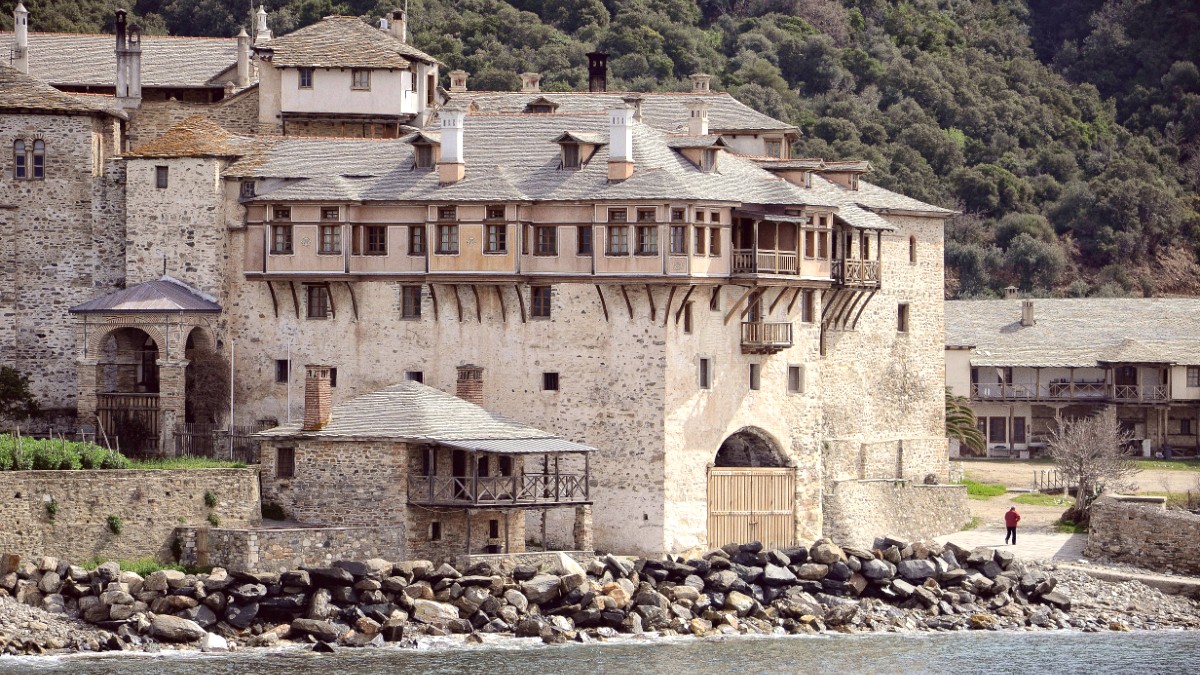
Greece
Monastic cuisine reflects the spiritual discipline of fasting, observed for much of the year. The food is largely vegetarian or vegan for extended periods.
Meals are humble, healthy, and sustaining, supporting the physical and spiritual work of the monastic community.
Meals occur communally in the refectory (trapeza), usually in silence. A monk typically reads from a spiritual text.
Monks serve a set portion; asking for seconds is generally not done. Arrive on time for meals as they begin and end promptly.
Meals begin and end with a prayer and blessing, emphasizing the spiritual aspect of sustenance.
A hearty and simple bean soup, a staple during fasting periods.
Nutritious and comforting.
Common, nourishing legume-based soup. Horta (boiled wild greens) often drizzled with monastery olive oil.
Simple, fresh, and wholesome.
Often baked in the monastery's own bakery, this fresh bread is a highlight, paired with abundant, high-quality olives and olive oil.
Local and authentic.
If your visit aligns with a fish-permitted day, you might experience simple, baked, or fried fish.
Meals might be slightly more elaborate on major feast days, including fish if the liturgical calendar permits.
Fine dining, mid-range, or budget eateries do not exist. All meals originate from the monasteries as part of their hospitality.
No markets or food halls operate within Mount Athos. Karyes, the administrative center, possesses a few small shops.
International cuisine options are not available. The diet is strictly traditional Greek monastic fare.
Meals are a gesture of monastic hospitality, freely given to pilgrims visiting the monasteries.
Part of the pilgrim experience.
There is no charge for meals; they are included as part of the monastic welcome.
A voluntary donation is customary.
Basic dry goods.
Olive oil, honey.
Bottled water.
Not for main meals.
Monasteries cannot cater to specific dietary restrictions like gluten-free requirements.
Bring your own food for severe allergies.
If you possess strict dietary needs (e.g., celiac disease), packing enough of your own required food is imperative.
Monasteries provide basic, traditional meals, not customized diets.
While you can communicate your needs beforehand, guarantees on catering cannot materialize.
The monastic mission centers on spiritual life and hospitality for all pilgrims, not customized meal services.
Cooking classes and food tours are not available. Monastic kitchens operate for the community's needs.
Some monasteries cultivate vineyards, olive groves, and vegetable gardens.
Not applicable. The focus remains on liturgical celebrations, not food festivals.
You might see monks working in the fields or processing olives.
This insight is part of the experience.
Meal times align with the monastery's liturgical schedule.
Punctuality is a virtue.
Meals are a means to spiritual focus, not indulgence.
Expect basic, traditional, and often plant-based meals.
Meals are generally eaten in silence, a contemplative practice.
Plan for meals within the monastic schedule. Missing the start may mean missing the meal.